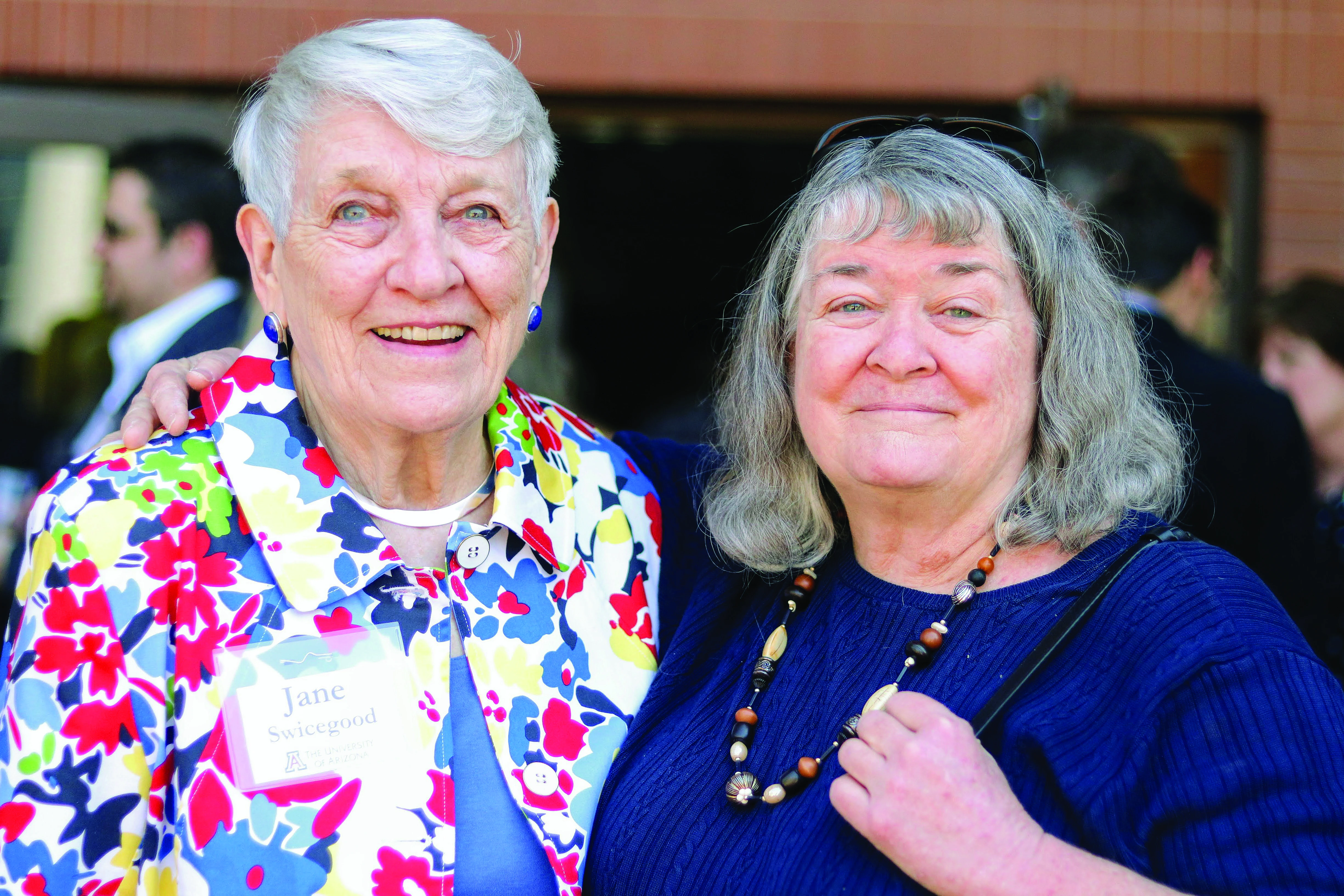
Jane Swicegood (left) and Prof. Emerita Jacqueline Sharkey
Photo by Nick Smallwood
By Jane Swicegood
Going back to college at 54 was a challenge. I was the age of some of my professors and could have been the mother of others. I’d been toying with the idea of returning to college, and the decision was made on Cape Cod while tending to my vegetable garden, one of my favorite pastimes. In files from attending college in 1951 and again in the ’70s, I found that my best grades were in English. When I saw Agricultural Communications in the University of Arizona catalog, my fate was sealed, and my life changed forever.
When I enrolled at the UA in January 1987 to earn a B.S. degree, some of the required courses were in journalism, all new to me. I became fascinated with the diversity of courses, so I took as many as possible. In addition to journalism, many science courses were required in my degree program. My days were filled with a variety of studies.
The Department of Journalism in 1987 was in the “Dark Ages“ compared with the facilities, space, equipment, technology, opportunities and staff now located in the Marshall Building. Much of the development and progress can be attributed to Jacqueline Sharkey’s vision for the future of the department, which under her guidance from 2001 to 2011 became the School of Journalism. Through her leadership and determination, journalism at the UA entered the millennium with a bang that resounds to this day. How exciting it is to see technological opportunities now available to budding journalists, including the use of drones!
The School of Journalism emphasizes and requires that students train in what I consider basic traits of character: integrity, ethics, respect, accuracy, diligence, creative thinking, curiosity and determination. These are also the school’s strengths.
Classes with Jacqueline Sharkey altered my thinking, opening areas of my brain formerly unexplored.
Her emphasis on watchdog reporting, more important now than ever before, influenced each of her students. Life stories of the incredible graduates accepted into the Hall of Fame confirmed the excellence of the School of Journalism.
The youngest of six children, I was born in the heart of the Depression. My father had a steady job as a Southern Railway engineer, and his large garden and small orchard provided food for our family, neighbors and those in need. My parents taught by example that we were responsible for the well-being of others, not just ourselves.
Having grown up near the Eastern Band of the Cherokee Nation, I became interested in Native Americans of the Southwest, and where better to learn than at Arizona State Museum? For 25 years I took classes and trips offered by the museum. I became deeply involved in bringing the world’s largest collections of Southwestern pots and baskets out of storage. After years of hard work and restoration, they are now housed in state-of-the-art exhibits at ASM.
Since I’m now playing in either the fourth quarter — or overtime! — I’ve decided to give with a warm hand instead of a cold hand. Recently I shared my assets with organizations, institutions and programs that enrich and/or save lives and land. To promote journalism — which is dear to my heart — I’ve supported the Jacqueline E. Sharkey Watchdog Journalism Fund at the school and the First Amendment Forever Fund through the Society of Professional Journalists, hoping to assist young journalists as they enter the world of ethical reporting and writing.
The act of giving has always been satisfying to me, but the joy I’ve experienced since making my “warm hand“ decision has been more fulfilling than I could have imagined.
It’s the most fun I’ve had in years!

